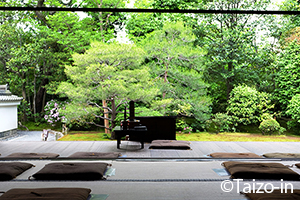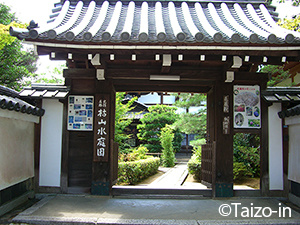Friday Forum
Friday Forum
Enabling technologies for autonomous driving
Friday, June 14
Organizers:
Tetsu Tanaka, Tohoku Univ.
Kamel Benaissa, Texas Instruments Inc.
Yusuke Oike, Sony Corp.
Ron Kapusta, Analog Devices, Inc.
Moderator:
Katsu Nakamura, Analog Devices, Inc.
- 9:00am Opening
-
- 9:10am Inertial and Depth Sensors for Autonomous Vehicles, Ron Kapusta (Analog Devices, Inc.)
-
Abstract
The pathway to achieving full autonomy begins with a cross-functional, system-level approach that surrounds the vehicle with a real-time, 360-degree safety shield. This shield is created by fusing data from high-performance inertial sensors, RADAR, and LIDAR with other sensor outputs, which ultimately gives the vehicle its ability to accurately perceive the road around it. While RADAR and LiDAR remain a premium feature in autonomous vehicles currently, they must become a standard fitment to address safety concerns.
In this talk, we will look at the sensor framework for the fully autonomous vehicle. The need for significantly improved performance and response time will be explored, along with opportunities to exploit the complementary nature of various sensors through fusion of their outputs.
- 9:55am Safety and Security: Changing the outlook of the autonomous car, Kamal Khouri (NXP Semiconductors)
-
Abstract
Automotive safety and security are not only pivotal to market acceptance of autonomous vehicles, but a required rite of passage for any automotive supplier. At NXP, safety and security are part of our DNA: we have deep knowhow on these subjects and our safety & security culture is deeply embedded within the company. This means that at every stage of the design and development process, we are implementing industry best practices, complemented by NXP’s unique experience and knowhow in safety & security to deliver state-of-the-art security and safety solutions. Making it easier for our customers to comply with industry-wide requirements and standards for safety and security by delivering documentation, tools and support.
- 10:40am Break (20min)
- 11:00am Electronics technologies evolve automobiles!?, Nobuaki Kawahara (DENSO Corporation)
-
Abstract:
Automotive electronics have been evolving and creating new control systems to realize safer and more eco-friendly vehicles. Many automotive functions are changing from mechanical to electronic control. By changing the control systems, the number of electronic parts such as sensors, electronic circuits, and actuators has been drastically increasing. And this trend will continue in the future to evolve automobiles. MEMS technologies, along with the packaging, electronic circuit, and software technologies, will become more important in the future vehicle equipped with many advanced sensors. Undoubtedly, the control system becomes more advanced with each improvement in the sensing speed or sensor accuracy.
In the presentation, the future trend of automobiles and Electronics will be discussed.
- 11:45am Automotive Image Sensor for autonomous vehicle and adaptive driver assistance system, Hiroaki Matsumoto (Sony)
-
Abstract:
Human vision is the most essential sensor to drive vehicle. Instead of human eyes, CMOS image sensor is the best sensing device to recognize objects and environment around the vehicle. Image sensors are also used in various use cases such as driver and passenger monitor in cabin of vehicle. For these use cases, some special functionalities and specification are needed. In this session the requirements for automotive image sensor will be discussed such as high dynamic range, flicker mitigation and low noise. In the last part the key technology to utilize image sensor, such as image recognition and computer vision will be discussed.
- 12:30am Lunch (1hr 0min)
- 1:30pm The Advent of the GPU in AI/Supercomputing and its Application to Autonomous Driving, Toru Baji (NVIDIA)
-
Abstract:
In the old good days, CPU performance increased almost 1.5 times / year thanks to the Moor’s Law. However by the year 2010, due to the leakage current and too complex CPU architecture, this rate becomes 1.1 times / year. On the other hand, parallel processing dedicated GPU continues to grow its performance with the rate of 1.5 times / year, and even with the Moor’s Law ending, it still continues to grow its performance by built-in accelerators. Now GPU is the most widely used accelerator in AI and Supercomputing. This GPU architecture is also applied to the most advanced autonomous driving SoC Xavier.
In this talk, GPU technologies which realize this high performance, the autonomous driving platform based on this GPU and Xavier SoC, and the end-to end system solution that enables its functional safety and reliability will be introduced.
- 2:15pm Envisioning Smart Mobility Society in the Connected Future, Takashi Imai (Toyota Motor Corp)
-
Abstract:
The automotive industry is changing faster today than it has in 100 years and must reconsider what our society and customers expect from us – as automotive companies. It is not only a shift from a car manufacturing & sales company to a mobility company but also a convergence of electrification, connectivity and artificial intelligence. With these exciting advances, it is our mission to provide new mobility society.The main objectives of this session are: (1) the current state of vehicle connectivity, showing connected vehicles in Japan and how to utilize big data, and (2) our vision of the smart mobility society of the future, which is the key to realize seamless and comfortable
transportation through connected vehicles with the Vehicle Control Interface and the Mobility Service Platform (MSPF).
- 3:05pm Panel discussion (30min) Moderator: Katsu Nakamura (ADI)
- 3:35pm Closing
Friday Evening Event — Experience of Zen Meditation —
Apart from Friday Forum registration, registration for this event is required with JPY 3,000 by no later than May 29, 2019. On-site registration is not available.
 As the relate
program of the Friday Forum, an
experience of Zen meditation program will be held. After the Friday Forum will end at 15:30, the
applicants will go to a Japanese temple to try Zen meditation.
As the relate
program of the Friday Forum, an
experience of Zen meditation program will be held. After the Friday Forum will end at 15:30, the
applicants will go to a Japanese temple to try Zen meditation.
Date and time: Friday, June 14, 16:15〜19:35
Place: Taizo-in
Departure place: Rihga Royal Hotel
Registration fee: 3,000 yen*
* Friday Forum attendee can register for Friday Evening Event.
* An additional ticket is also available (3,000 yen) for an additional person.
Limited: 120 persons (first-come-first-served basis)
English instruction will be provided.
Time Table:
| 16:15 | Departure from Rihga Royal Hotel |
| 17:00 | Arrival at a temple |
| 17:20 – 18:50 | Experience of Zen meditation |
| 18:50 | Departure from the temple |
| 19:35 | Arrival at Rihga Royal Hotel |
* Before Zen meditation, green tea and Japanese sweets will be provided by the temple.

<About Zen Meditation>
 Zen Meditation is a method of discipline of the primary practice of
the Zen Buddhism.
Zen Meditation is a method of discipline of the primary practice of
the Zen Buddhism.
The method and focus of training vary depending on the religious schools. The participants experience “Zen” by sitting cross-legged on the floor, calm down, regulate the mind, cut down the unnecessary thoughts, and concentrate on inner self.
* Participants can also choose to experience “keisaku” (also called as “kyosaku”), which is the physical self-restraining method by being slapped on the shoulder or the back by the priest.
<About Taizo-in>
 Established in 1404, Taizo-in Zen Buddhist Temple is one of
the 46 sub-temples situated in Japan’s largest Zen Buddhist monastery, Myoshinji Temple, and it
has remained as one of the few sub-temples that are open to the public all year round.
Established in 1404, Taizo-in Zen Buddhist Temple is one of
the 46 sub-temples situated in Japan’s largest Zen Buddhist monastery, Myoshinji Temple, and it
has remained as one of the few sub-temples that are open to the public all year round.
Kyoto has long been the heart of Zen Buddhism culture in Japan. Zazen is mediation in silence
and stillness. The arts of sadoh (tea ceremony) and kadoh (flower arranging) developed
concurrently with and are inseparable from Zen. You can experience all of these aspects of Zen
at Taizo-in. Surely you cannot find a more enriching experience even if you search the world
over.

